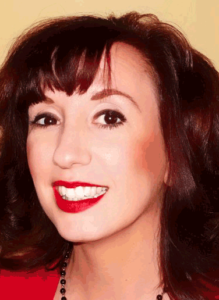Tracy Wolfe
A woman of many talents and skills, Wolfe works to efficiently manage all aspects of the Corbis digital asset management system.
What companies/organizations have you worked for as a DAM professional? What was your role at each?
At DDB Seattle, I worked as a Visual Resource Manager, a newly created role to manage client assets using the DAM system Extensis Portfolio. At the time, the project involved not only loading high resolution assets to the system, but creating a keywording process and training users.
I have been working at Corbis Images as a Digital Asset Manager for several years, managing all aspects of the DAM system (HP MediaBin) for the communications department at the Bill & Melinda Gates Foundation. I wear many hats in this role, from managing and implementing system customizations and upgrades, to loading images, applying metadata, governance, creating documentation and tracking bugs. I am also the contact for the client, users and the internal interface with Corbis IT as needed.
Editor note: Ms. Wolfe is now a Search Editor at Getty Images. She works with metadata and taxonomy.
How do you describe digital asset management to others?
I usually describe my role as being a digital librarian because it is something most people can understand. I explain that I work with documents, photographs and videos – all digital filetypes and with helping users to efficiently find those assets via the system.
How did you learn DAM? Any recommended sources?
At first, at DDB, I simply relied on my innate organizational skills and understanding of the creative workflow at an ad agency. After that, I decided to pursue an MLIS to broaden my knowledge of metadata, controlled vocabulary, DAM, and all web technologies.
What’s the most important thing for someone new to DAM to understand about DAM?
The system does not run itself. There needs to be someone assigned to ensure that metadata is entered consistently, that users can find what they need and that things like upgrades actually occur. Many companies think that they will purchase a DAM, load all their assets, apply a few tags and then forget about it, but DAM is a living and evolving organism.
If you weren’t doing DAM as a career, what would you be doing?
Some type of digital librarian job such as taxonomist, metadata librarian, knowledge management position or even perhaps something in the DAM software world.
What is your ongoing greatest challenge with DAM?
Getting internal and external support when technical issues inevitably arise.
What is your vision for DAM? What will it look like in 5 years?
I hope that all DAM embraces simplicity. The administrative interfaces on many enterprise level DAM systems are very complex in terms of security, permissions, taxonomies, metadata and overall configuration.
I hope there is more readily available DAM education. Conferences like the Henry Stewart DAM series and Creatasphere help, as do programs like the San Jose State University’s MLIS program which has a DAM course taught by one of the masters of DAM education, John Horodyski.
What was your biggest mistake with regard to DAM?
Cutting the QA process short following a major upgrade to HP MediaBin.
What was your biggest success with regard to DAM?
Making video operational in our current system by using a plug-in. For years, the client’s preferred original video format would not play or download in our DAM system and this upgrade yielded new information regarding a cost effective plug-in to solve the video issues.
What more would you like to learn about DAM?
Every day I learn something new about our system and our client. I hope in my future career, I have many chances to continue learning about DAM.
This interview originally appeared on DAM Guru on Mon, 17 Feb 2014. For more DAM News interviews, see the interviews index page.
Share this Article:

